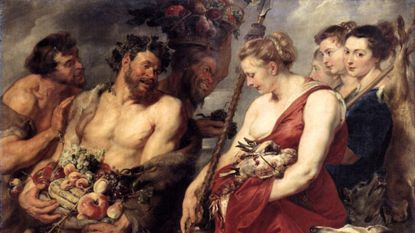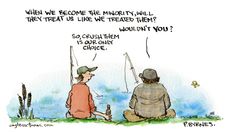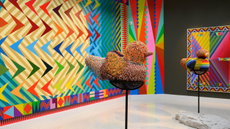Rubens & Women review: casting a new light on the Flemish baroque master
This show brings together 40 masterpieces in an attempt to dispel the cliché of Rubens as a painter of sex objects

Peter Paul Rubens is an artist renowned "as a painter of flesh", said Hannah McGivern in The Art Newspaper. Indeed, such was the Flemish baroque master's "penchant for nudes" that the term "Rubenesque" has become "shorthand for a voluptuous female body". This new show at Dulwich Picture Gallery brings together some 40 masterpieces in an attempt to dispel the cliché of Rubens as a painter of curvaceous sex objects, and to examine the important role of women in his life. In fact, it shows that he painted women as "powerful, energetic, even courageous" characters, frequently depicting them in heroic contexts or as serene deities. Featuring "tender portraits" of family members as well as paintings based on mythological or biblical sources, it promises to cast an entirely new light on the artist.
Rubens (1577-1640) wasn't a womaniser, said Hettie Judah in The i Paper. In fact, he was "uxorious to a fault". The "comely" female subjects he depicted with increased frequency in his final decade often carry the face – and indeed the "full breasts, thighs and buttocks" – of his second wife, Helena Fourment, reputed to be the most beautiful woman in Antwerp. Fourment was just 16 when she married the 53-year-old painter. As a "remarkably intimate" chalk drawing thought to depict her demonstrates, he was clearly "obsessed" with her. Yet his "fascination with the female form" long predates Fourment. We see portraits of his "spirited" first wife Isabella, who died young, and of their "meltingly sweet" daughter Clara Serena, as well as likenesses of various female patrons, including the Spanish Infanta. The show argues that his depictions of "dimpled, weighty" flesh stem from his dedication "to painting real bodies". Yet his "fleshy tendencies" do tip into "preposterous excess": witness "The Birth of the Milky Way" (1636-38), in which a naked Juno sits atop a cloud before a gold chariot drawn by peacocks, and creates the galaxy "with milk squirting from her pearly pink breast".
The argument that paintings like this depict "empowered" female subjects seems unconvincing to me, said Alastair Sooke in The Daily Telegraph. To my eye, they have a "fantasy-like, even fetishistic quality". Yet this exhibition reminds us that they were only one aspect of Rubens' oeuvre. There are also tender family portraits; Isabella Clara Eugenia, Archduchess of the Netherlands, depicted as a nun; and a marchesa from a Genoese banking family, appearing to "float upon her ruff... as if her identity were disconnected altogether from her body". Particularly striking is a "spellbinding meditation on the battle of the sexes", which depicts Diana, the goddess of chastity, returning from the hunt under the watchful eye of "leering male satyrs". It is one of many highlights of this "clever, enterprising show".
Subscribe to The Week
Escape your echo chamber. Get the facts behind the news, plus analysis from multiple perspectives.

Sign up for The Week's Free Newsletters
From our morning news briefing to a weekly Good News Newsletter, get the best of The Week delivered directly to your inbox.
From our morning news briefing to a weekly Good News Newsletter, get the best of The Week delivered directly to your inbox.
Dulwich Picture Gallery, London SE21 (020-8693 5254; dulwichpicturegallery.org.uk). Until 28 January 2024
Sign up to the Arts & Life newsletter for reviews and recommendations
Create an account with the same email registered to your subscription to unlock access.
Sign up for Today's Best Articles in your inbox
A free daily email with the biggest news stories of the day – and the best features from TheWeek.com
-
 Today's political cartoons - May 4, 2024
Today's political cartoons - May 4, 2024Cartoons Saturday's cartoons - reflections in the pond, riding shotgun, and more
By The Week US Published
-
 5 high-caliber cartoons about Kristi Noem shooting her puppy
5 high-caliber cartoons about Kristi Noem shooting her puppyCartoons Artists take on the rainbow bridge, a farm upstate, and more
By The Week US Published
-
 The Week Unwrapped: Why is the world running low on blood?
The Week Unwrapped: Why is the world running low on blood?Podcast Scientists believe universal donor blood is within reach – plus, the row over an immersive D-Day simulation, and an Ozempic faux pas
By The Week Staff Published
-
 Properties of the week: houses with enchanting gardens
Properties of the week: houses with enchanting gardensThe Week Recommends Featuring pretty homes in Hampshire, Devon and West Sussex
By The Week UK Published
-
 Venice Biennale 2024: from the good to the bad to the downright 'bizarre'
Venice Biennale 2024: from the good to the bad to the downright 'bizarre'The Week Recommends Central exhibition features the work of some 330 artists
By The Week UK Published
-
 Sunset Song: gripping theatre that's 'close to magic'
Sunset Song: gripping theatre that's 'close to magic'The Week Recommends Morna Young's 'first-class adaptation' of Lewis Grassic Gibbon's classic novel
By The Week UK Published
-
 Challengers: 'the most purely pleasurable film of the year so far'
Challengers: 'the most purely pleasurable film of the year so far'The Week Recommends Zendaya plays a former tennis player turned coach in this 'almost ridiculously' sexy drama
By The Week UK Published
-
 Baby Reindeer: a 'compelling and unforgettable' series
Baby Reindeer: a 'compelling and unforgettable' seriesThe Week Recommends Comedian Richard Gadd's disturbing Netflix drama about stalking
By The Week UK Published
-
 Daniel Wallace's 5 favorite books that should not be forgotten
Daniel Wallace's 5 favorite books that should not be forgottenFeature The author recommends works by Italo Calvino, Evan S. Connell, and more
By The Week US Published
-
 6 picturesque homes in Arizona
6 picturesque homes in ArizonaFeature Featuring a glass elevator in Sedona and a grotto waterfall in Paradise Valley
By The Week Staff Published
-
 Silversea cruise review: a Central and North American adventure
Silversea cruise review: a Central and North American adventureThe Week Recommends An incredible journey featuring cultural exploration, cooking classes, comfort and more
By Yasemen Kaner-White Published